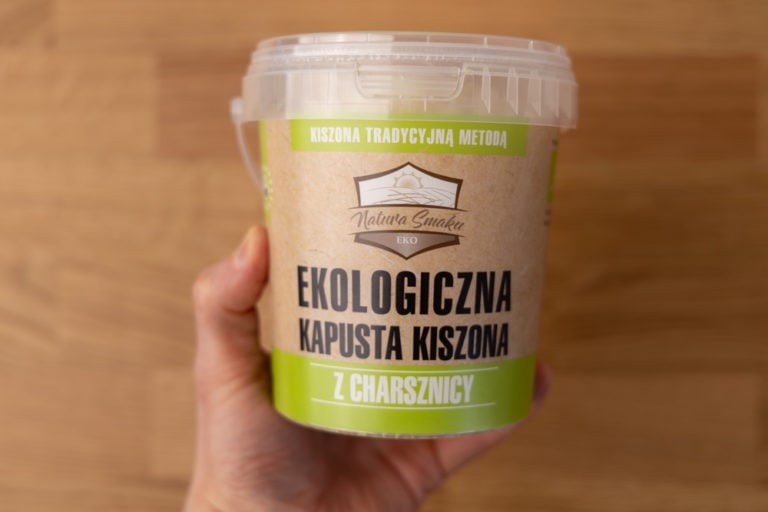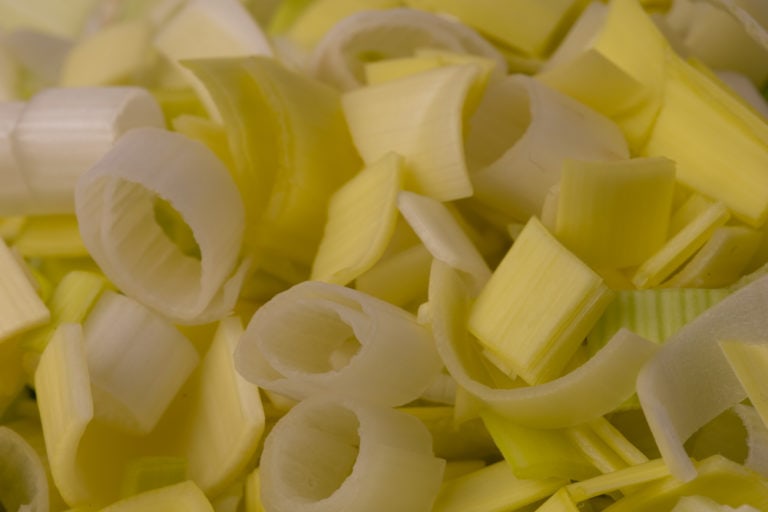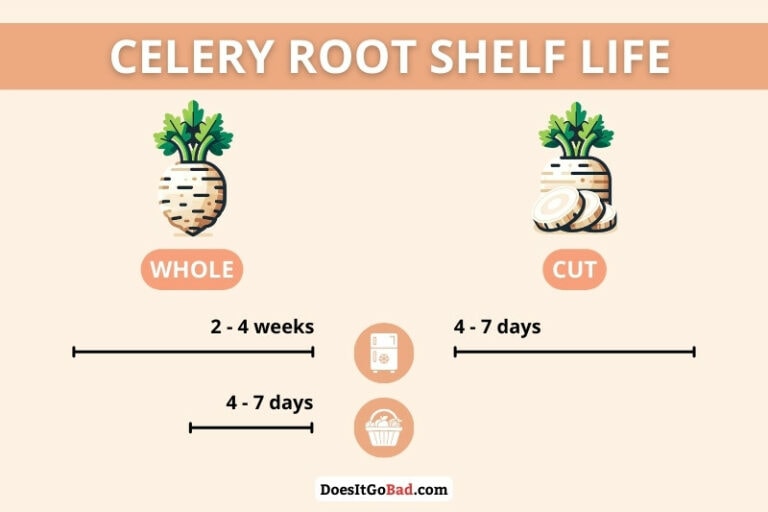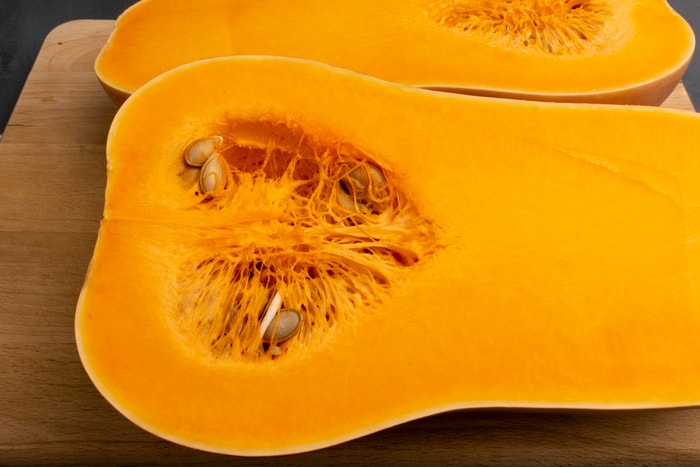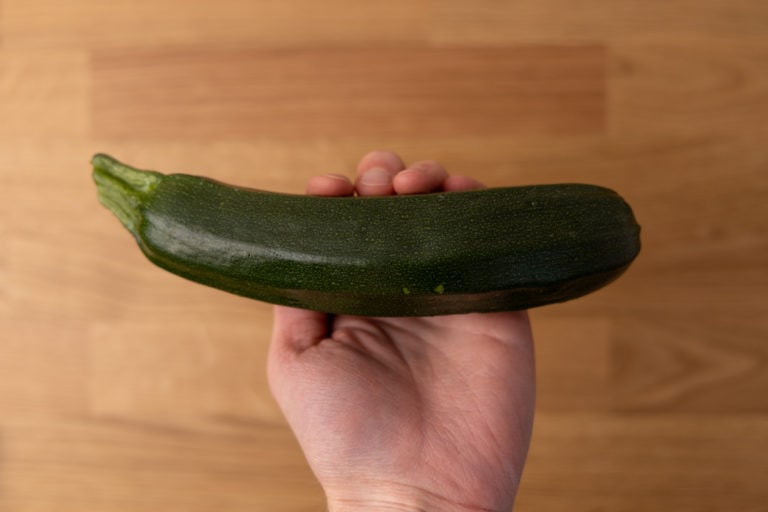How to Tell if Celery is Bad? [3 Spoilage Signs]
Got a celery stalk sitting in the fridge for a few days already and not sure if it’s still okay to use? How do you tell if celery is bad, exactly?
Telling whether your whole celery or celery sticks are still edible isn’t rocket science, but there are a few things you need to remember.
Let’s talk about celery spoilage.
How to Tell if Celery is Bad?
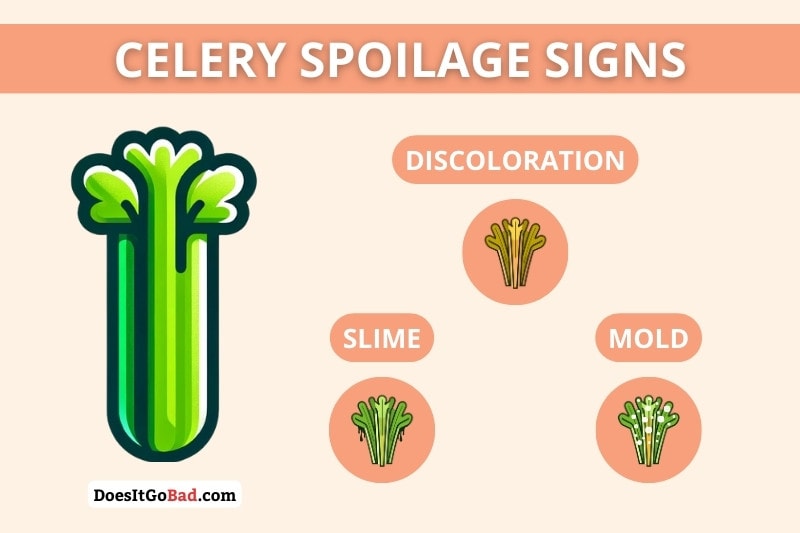
Discard celery if the stalk has changed its color and is yellow, brown, or has large black spots. Toss it if the celery is moldy, slimy, or feels wet to the touch. If your celery stalk is starting to go limp, or the leaves are dry or slimy, it’s your last chance to use it.
That’s celery spoilage 101.
Now, let’s talk about each one in more detail, starting with firmness of the stalk or rib, as it’s the primary indicator of quality for celery.
Softening, Slime, and Water-Soaked Spots
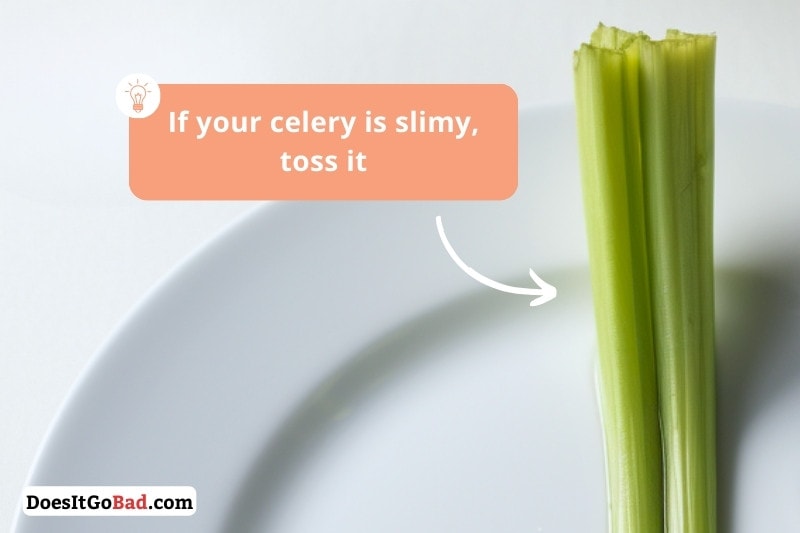
Celery becomes soft and bendable over time due to water loss. It’ll take longer if you store it in the vegetable drawer, but it’ll happen eventually. And if it gets to the point that the celery stalk is mushy, slimy, or water-soaked, it feels rubbery, or there are many soft spots, it’s time to toss it.
(Read our guide on storing celery to learn how to prevent that from happening.)
As usual with soft veggies, it’s up to you to decide whether your celery is done for or salvageable. If it’s developed slime, it’s gone, but if it’s only “kinda soft,” it can still work in a couple of settings.
Let’s talk about limp celery.
Limp Celery
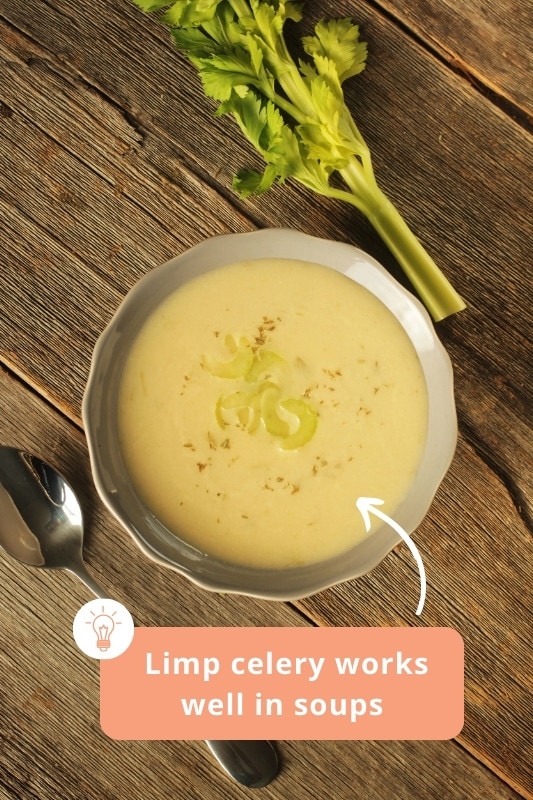
If your raw celery has lost some of its crispness, meaning it’s a bit limp but not super soft (and useless), it’s still usable. In other words, you can eat limp celery.
For starters, you can revive it by submerging celery sticks in water with ice cubes for 1 to 2 hours. That will help it regain some of its crisp texture, but don’t expect miracles.
(The same method works for reviving old lettuce.)
Now, your bendable celery still works okay in all sorts of cooked dishes (think soups), smoothies, or processed to make celery juice. In those, you can hardly tell the difference between a fresh celery stalk and one that’s old and limp. So go cut it up and make that vegetable soup or green smoothie.
(Speaking of going limp, read our article on how long celery lasts to learn about the shelf life of celery.)
Mold
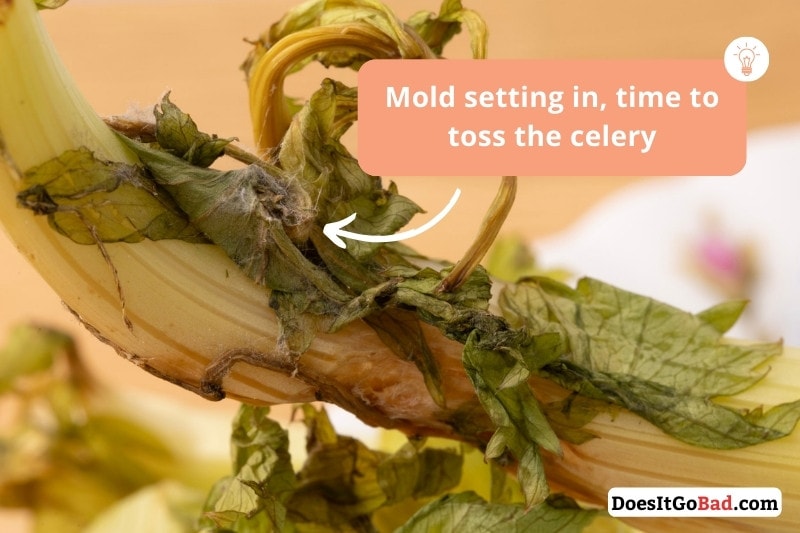
Too much moisture around often results in celery growing mold, and mold means your celery has gone bad. Of course, if only a single rib has some fuzzy mold growing and the rest is fine, you can cut off that rib and use the rest. But if the moldy area is quite large and affects many ribs, it’s time to let the veggie go.
If the bottom grows mold, cut off all the stalks 2 inches above the mold level.
Mold growth is also how cooked celery goes bad. So, if you store your cooked celery in an airtight container, check it for mold before reheating.
Discoloration
Fresh celery stalks are usually light green and full of color. Over time, the veggie loses its brightness and becomes a bit pale. That old celery is still okay to use, but the overall quality might not be that great.
But if the color change is more pronounced, meaning your celery has become yellow (both celery leaves and the ribs are yellow), and especially if it has browned due to bacterial soft rot, you should toss it.
(Yellowing celery is fine to use, the same way yellowing broccoli is okay to use.)
Fortunately, it’s usually easy to tell by the looks if that celery stalk is slightly older but okay to use or a prime candidate for the compost pile.
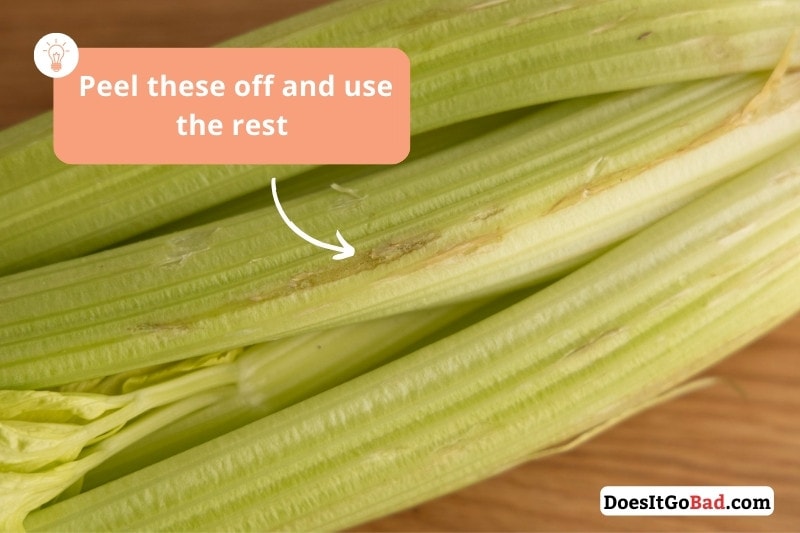
Of course, there might be some damaged, bruised, discolored, or woody areas on otherwise perfectly fine ribs. That’s normal, and you just peel those off and use the rest.
Rotten Records: Share Your Snap!
Caught some food past its prime? Upload your photo to “Rotten Records” and help others spot the signs of spoilage. Every image makes our food community safer and more informed!
